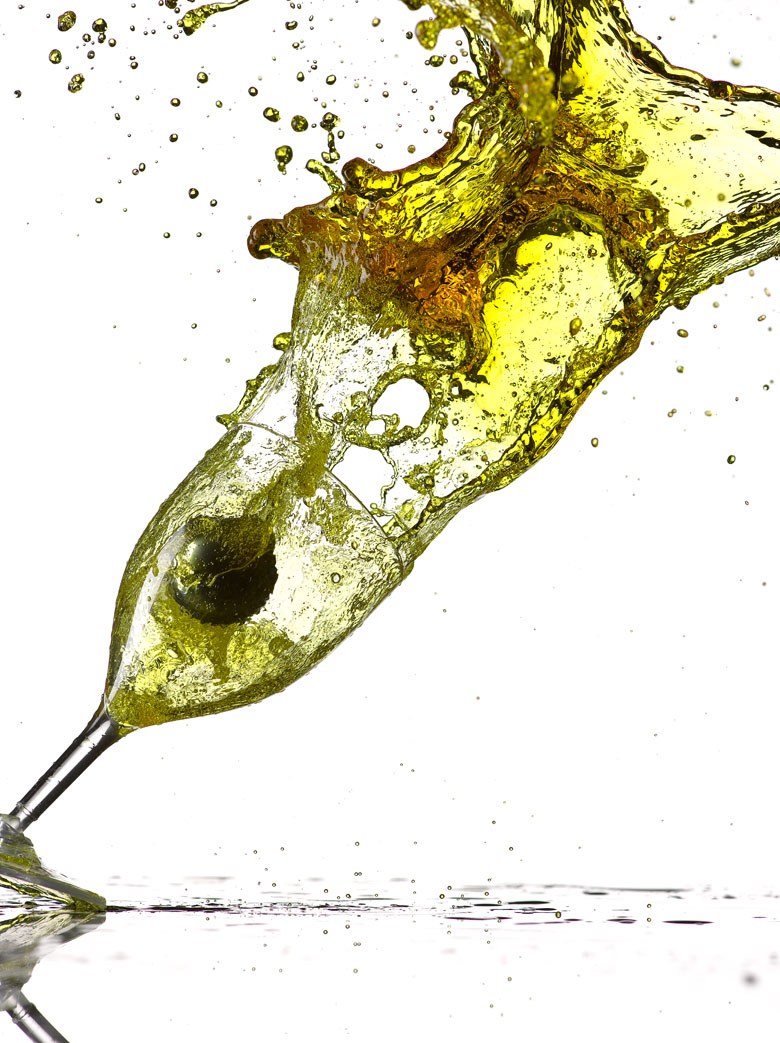Harold Edgerton
 Maybe it’s something about how every season has its own particular look created by the angle of the sun in relation with the earth. This thought gets me thinking about light or, more appropriately, the visual quality of the light and the shadows it creates. That thought leads me to the light bulb and Thomas Edison who invented it, and how his invention certainly enlightened us in both senses of that word. And Edison leads me to another American innovator, Harold Eugene Edgerton. His name is less well known, and yet Harold had a big influence in my photographic life. Actually, anyone who has ever used a flash on a camera has used his invention, as he was the brilliant M.I.T. engineer who invented the modern electronic flash. His invention can be found today on most consumer cameras all the way up to the big 4800 watt/second units I use in the studio. Electronic flash, strobe lights, or just strobes, as I like to call them, give us light for just an instant. Just one instant. Savor that a moment. Instant being anywhere from 1/400 to 1/13,000 of a second or more for some specialized units. One of Harold’s first images demonstrating his new light was freezing the motion of water coming out of a faucet. And, as I was thinking about adding some new and different images to my website, I thought it might be an interesting exercise to work with disturbed liquid in turbulent motion. Of course, as we all know, thinking about doing something is different that actually doing it. The project involved hi tech laser triggers which stopped working during the shoot; high speed digital strobe units that kept blowing fuses; plenty of ad hoc engineering by my colleague, Mr. Bob Beard, to get the projectiles to land where and when they were supposed to land. Not to mention cleaning up all the glass we broke, shattered, and smashed, and the huge watery mess we created, and had to mop and clean, again, and again, and again. After several days of shooting, dropping, and mopping we stopped, took a breather, and studied what we had, and said, “Yeah, this is a pretty good start.” A sample of what we did is included in this essay. To me the images are a kind of homage to Harold’s innovation, which allows us to see things that could not be seen in any other kind of light. And that’s pretty much the story, the best I can tell it.
Maybe it’s something about how every season has its own particular look created by the angle of the sun in relation with the earth. This thought gets me thinking about light or, more appropriately, the visual quality of the light and the shadows it creates. That thought leads me to the light bulb and Thomas Edison who invented it, and how his invention certainly enlightened us in both senses of that word. And Edison leads me to another American innovator, Harold Eugene Edgerton. His name is less well known, and yet Harold had a big influence in my photographic life. Actually, anyone who has ever used a flash on a camera has used his invention, as he was the brilliant M.I.T. engineer who invented the modern electronic flash. His invention can be found today on most consumer cameras all the way up to the big 4800 watt/second units I use in the studio. Electronic flash, strobe lights, or just strobes, as I like to call them, give us light for just an instant. Just one instant. Savor that a moment. Instant being anywhere from 1/400 to 1/13,000 of a second or more for some specialized units. One of Harold’s first images demonstrating his new light was freezing the motion of water coming out of a faucet. And, as I was thinking about adding some new and different images to my website, I thought it might be an interesting exercise to work with disturbed liquid in turbulent motion. Of course, as we all know, thinking about doing something is different that actually doing it. The project involved hi tech laser triggers which stopped working during the shoot; high speed digital strobe units that kept blowing fuses; plenty of ad hoc engineering by my colleague, Mr. Bob Beard, to get the projectiles to land where and when they were supposed to land. Not to mention cleaning up all the glass we broke, shattered, and smashed, and the huge watery mess we created, and had to mop and clean, again, and again, and again. After several days of shooting, dropping, and mopping we stopped, took a breather, and studied what we had, and said, “Yeah, this is a pretty good start.” A sample of what we did is included in this essay. To me the images are a kind of homage to Harold’s innovation, which allows us to see things that could not be seen in any other kind of light. And that’s pretty much the story, the best I can tell it.